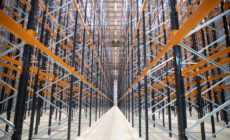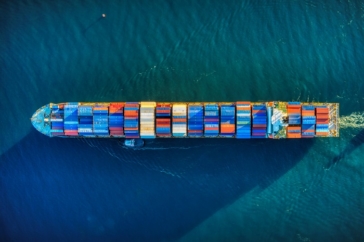-
ROSSLARE EUROPORT TARGETS HEALTH & SAFETY WITH CAMERA TELEMATICS PARTNERSHIP - 2 days ago
-
Landmark Study Reveals Wearable Robotics Significantly Boost Safety and Efficiency in Industrial Environments - July 24, 2024
-
Visku Tackle The Retail Seasonality Challenge One Pallet At A Time - July 22, 2024
-
KAMMAC AND BERGEN LOGISTICS STRENGTHEN FASHION & LIFESTYLE SERVICES IN THE UK - July 19, 2024
-
TENTBOX EXTENDS PARTNERSHIP WITH ARROWXL TO SUPPORT INCREASING DEMAND - July 17, 2024
-
The Perfume Shop improves customer journeys while driving profitability in partnership with Scurri - July 17, 2024
-
ZEROMISSION SECURES £2.3M ($3M) INVESTMENT TO ACCELERATE ELECTRIC FLEETS - July 16, 2024
-
BCMPA CELEBRATES SUCCESS OF 2024 CONFERENCE - July 15, 2024
-
Best of the Best: Jungheinrich Celebrates Triple International Award Win - July 12, 2024
-
GOPLASTICPALLETS.COM CALLS ON NEW CHANCELLOR RACHEL REEVES TO CONSIDER PLASTIC PACKAGING TAX REFORM - July 10, 2024
“Nearshoring” — the process of moving business operations closer to the marketplace — is set to alleviate the global supply chain chaos in the United States. In fact, almost two-thirds of shippers believe supply chains are now too global and need to be shifted towards more regional and local ecosystems. Although the trend toward nearshoring began at least a decade ago, the pandemic highlighted the need for greater control over the supply chain and mitigate risk by reducing overseas dependency.
Eliminating the risk of single source supplies
The pandemic highlighted the risks posed by a single source of supply: the impact of a virus outbreak at a manufacturing plant in Asia, for instance, can be felt across the globe. As such, traditional global networks are increasingly being replaced with regional or local networks. “When a global link breaks, regional links need to be self-sustainable,” says Sylvie Thompson, a supply chain consultant with NTT Data Services. Issues like steep transportation costs and raw materials shortages are expected to continue until regional links are solidified. “Whether we like it or not, all supply chains are related. Until the world gets the virus under control, supply chains are going to continue to be disrupted,” says Thompson. 83% of shippers have experienced disrupted key materials supplies so far in 2022, compared to just 49% last year. As such, 83% of shippers say they consequently intend to change sources of supply in favor of regional and domestic sources.
Technological advancements
Moreover, technological advancements like automation and conveyor solutions across multiple sectors can further increase efficiency and production output. These solutions can also decrease operational costs in warehouse or production facilities. Additionally, cutting-edge tech, such as, robotics, 5G, Internet of Things, real-time data transmission, and data analytics are further collectively set to improve the supply chain and keep distractions at bay. With the latest advanced technology, logistics managers can benefit from sharper insights into all aspects of the supply chain and solve problems faster and as they arise. “5G reduces the amount of latency, so it is much more real-time, which is important because there is a large amount of data that has to travel back and forth”, says Dave Bushee, Senior VP of information technology for Penske Logistics. In fact, 56% of third-party logistics managers say it’s now moderately or extremely important to provide clients with 5G-enabled services.
Nevertheless, “tech-driven productivity improvements can only help so much,” notes Thompson. “No amount of technology is going to resolve some of the capacity issues, but it will give us more agility to adjust to maintain production”. Since many elements of the supply chain still require human intervention, human labor will still be in high demand. Yet, with around 45% of companies across the United States hoping to shift production locations within the next three years, the reverberations of an isolated breakdown in the global supply chain will hopefully ultimately be minimized in the future.

































